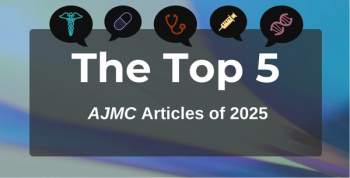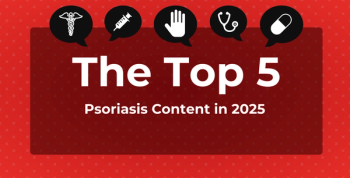
5 Things to Know About COVID-19 Before the Holiday Season
As the holidays approach, experts recommend tips to reduce the risk of COVID-19.
The holidays come each year and often bring with them seasonal sickness, whether it’s driven by seeing family for the holiday, traveling, or the cold weather.
1. COVID-19 is most often caught after close contact
As the holiday season approaches and close contact with friends or family is almost guaranteed, individuals should be aware of the likelihood of catching COVID-19 in
Although it is possible for the virus to spread through poorly ventilated areas containing the droplets for hours or even touching a surface with COVID-19 on it, these routes are less common.3 However, individuals may want to keep these routes in mind as they shop for Christmas presents, especially as clothing, toys, and bath and body products are bought and sold after exchanging hands throughout the day. Individuals can also wear masks in public areas to lower the chances of COVID-19 putting a wrench in their holiday plans.
2. COVID-19 can spread quickly, even without symptoms
Health experts have concluded that COVID-19 can spread among asymptomatic people, making it hard to tell how many people have been or could be infected. Individuals with COVID-19 are
This can be especially dangerous around the holidays, as individuals throughout the country look to spend the holidays with their family. Those infected with COVID-19 may visit several different family members before realizing that they have been infected with the virus, leading to the illness spreading without their knowledge. The
Individuals who know they have COVID-19 should avoid close contact as much as possible to avoid the further spread of the virus.
3. At-home treatments for COVID-19 can help alleviate symptoms
Individuals who contract COVID-19 can now receive at-home treatments that can help to alleviate some of the symptoms of the virus. Nirmatrelvir with ritonavir (Paxlovid), an antiviral medication, can be taken at home, orally, once per day by individuals 12 years and older. Molnupiravir (Lagevrio) is another form of antiviral medication that can be taken at home once per day by adults. These medications work to prevent the virus from spreading further throughout the body and help stop the illness from becoming more severe and leading to death. These medications are among the factors helping to lower the overall rate of hospitalizations for COVID-19 in the US.1
Although there are some very effective treatments for COVID-19, individuals suspecting they have COVID-19 should talk to their doctor to confirm the best option for them. Treatments that are not approved by the FDA should not be used to treat COVID-19. This includes ivermectin and hydroxychloroquine, both of which were
4. The easiest way to prevent severe COVID-19 is to remain up to date on your vaccinations
The COVID-19 vaccine and its boosters remain the easiest method of preventing serious disease and death in the country. However,
Although the vaccines will not completely prevent the virus, research has proven that they can help to prevent long-term effects of the virus as well as hospitalizations, emergency department visits, and urgent care visits while infected. Staying up to date on vaccinations is the easiest way to ensure your holiday isn’t affected by the severe symptoms of COVID-19.
5. COVID-19 can be deadly, especially in the winter
COVID-19 is responsible for approximately 918
Being aware of those around you, whether family and friends or other individuals in public spaces, can help to not only protect yourself but also others from experiencing the severity of COVID-19 during the holidays. Taking precautions seriously can help to keep the majority of the country healthy as the year draws to a close.
References
- COVID-NET laboratory-confirmed COVID-19 hospitalizations. Updated December 9, 2024. Accessed December 12, 2024.
https://covid.cdc.gov/covid-data-tracker/#covidnet-hospitalization-network - How it spreads. State of Hawaii Department of Health. 2024. Accessed December 12, 2024.
https://health.hawaii.gov/coronavirusdisease2019/what-you-should-know/how-it-spreads/ - Collins S, Starkman E. How long is the COVID-19 incubation period? WebMD. January 7, 2024. Accessed December 12, 2024.
https://www.webmd.com/covid/coronavirus-incubation-period - How to stop the spread of COVID-19. Mount Sinai. August 2024. Accessed Decmeber 12, 2024.
https://www.mountsinai.org/health-library/special-topic/how-to-stop-the-spread-of-covid-19 - People with certain medical conditions and COVID-19 risk factors. CDC. Accessed December 12, 2024.
https://www.cdc.gov/covid/risk-factors/index.html - Treating COVID. University of Maryland Medical System. Updated April 14, 2022. Accessed December 12, 2024.
https://www.umms.org/health-services/covid-19/treating-covid - US coronavirus vaccine tracker. USA Facts. Updated May 10, 2024. Accessed December 12, 2024.
https://usafacts.org/visualizations/covid-vaccine-tracker-states/ - COVID-19 vaccine effectiveness update. CDC. May 10, 2024. Accessed December 12, 2024.
https://covid.cdc.gov/covid-data-tracker/#vaccine-effectiveness - Bonavitacola J. Pfizer COVID-19 vaccine effective in children aged 5 to 17 years. AJMC®. December 12, 2024. Accessed December 12, 2024.
https://www.ajmc.com/view/pfizer-covid-19-vaccine-effective-in-children-aged-5-to-17-years - Provisional COVID-19 mortality surveillance. CDC. Updated December 12, 2024. Accessed December 12, 2024.
https://www.cdc.gov/nchs/nvss/vsrr/covid19/index.htm - COVID-19 can surge throughout the year. CDC. 2024. Accessed December 12, 2024. https://www.cdc.gov/ncird/whats-new/covid-19-can-surge-throughout-the-year.html
Newsletter
Stay ahead of policy, cost, and value—subscribe to AJMC for expert insights at the intersection of clinical care and health economics.








































